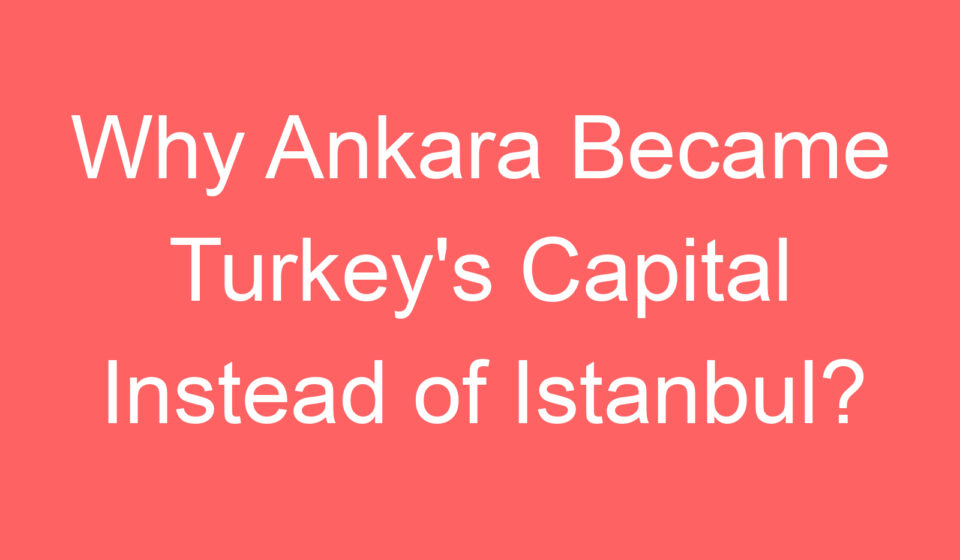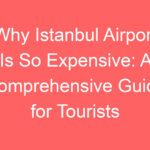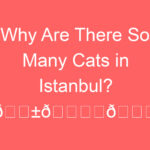
Why Ankara Became Turkey’s Capital Instead of Istanbul?
When visiting Turkey, many travelers naturally assume that Istanbul, with its iconic skyline, bustling bazaars, and rich history, would be the country’s capital. Surprisingly, the political heart of Turkey lies in Ankara. Many are also intrigued by Ankara’s quieter streets, modern government buildings, and historical sites that reflect the country’s evolution. Beyond its administrative significance, Ankara offers cultural experiences, contemporary art galleries, parks, and a dynamic city life that combines history with modernity.
Table Of Content
- Historical Background: From Empire to Republic
- Strategic and Security Reasons
- Geographic Safety 🌄
- Centralized Governance 🏛️
- Accessibility and Expansion 🚆
- Breaking from the Ottoman Legacy
- Symbolic Shift 🔗
- Vision for Modernization 🏗️
- Economic and Developmental Strategy
- Balanced Growth 📈
- Infrastructure Investments 🛠️
- Political Neutrality and National Symbolism
- Administrative Decentralization ⚖️
- Nationalist Significance 🇹🇷
- Ankara Today: What Tourists Can See
- Conclusion
- Related Posts
This blog post explores why Ankara became Turkey’s capital instead of Istanbul, delving deeply into its historical roots, strategic importance, urban development, cultural heritage, and the experiences it offers to tourists, giving visitors a richer understanding of the capital’s pivotal role in shaping modern Turkey.
Historical Background: From Empire to Republic
Istanbul served as the capital of the Ottoman Empire for nearly 470 years, acting as a hub for political power, culture, trade, and religion. However, after the empire’s defeat in World War I, Istanbul faced occupation by Allied forces, including British, French, Italian, and Greek troops, from 1918 to 1923. The occupation exposed the city’s vulnerability and underscored the need for a safer, more centrally located capital to consolidate the new republic.
During the Turkish War of Independence (1919-1923), Mustafa Kemal Atatürk and the nationalist movement established their headquarters in Ankara in 1920. The Turkish Grand National Assembly opened in Ankara on April 23, 1920, becoming the central hub for organizing the resistance. By October 13, 1923, Ankara was officially declared the capital, symbolizing a new beginning for the young nation and reflecting the strategic and political vision of its founders.
Strategic and Security Reasons
Geographic Safety 🌄
Ankara’s central location in Anatolia made it significantly easier to defend compared to the exposed coastal position of Istanbul. Surrounded by hills and situated inland, Ankara was naturally protected from potential naval invasions or foreign military occupation. Its geography allowed for effective monitoring and defense, which was vital during the unstable post-war period.
Centralized Governance 🏛️
Being located at the heart of Turkey, Ankara enabled efficient management of the country’s diverse and expansive regions. This centralization facilitated communication between provinces, improved administrative efficiency, and ensured that national policies could be implemented evenly across the country.
Accessibility and Expansion 🚆
Ankara’s central location also made it easier to expand transport networks, including railways and highways, connecting the capital to all major regions. This accessibility promoted commerce, travel, and integration of remote areas into the national economy.
Breaking from the Ottoman Legacy
Symbolic Shift 🔗
Relocating the capital from Istanbul to Ankara represented a deliberate break from Ottoman imperial traditions. Istanbul was synonymous with palaces, religious institutions, and the Ottoman elite. Atatürk sought to create a modern, secular identity for Turkey, establishing a fresh start unburdened by the symbols of imperial rule.
Vision for Modernization 🏗️
Ankara provided a blank canvas for architects and planners to design government buildings, residential areas, and civic infrastructure in a modern style. This allowed for the implementation of Atatürk’s vision of a progressive nation bridging Eastern and Western ideals, with open spaces, planned streets, and public institutions that embodied the principles of the republic.
Economic and Developmental Strategy
Balanced Growth 📈
By establishing Ankara as the capital, the government aimed to stimulate development in interior regions, avoiding over-concentration in Istanbul. This encouraged investment in infrastructure, education, and public services in central Anatolia, fostering economic balance and reducing regional disparities.
Infrastructure Investments 🛠️
Capital designation led to extensive construction projects, including government offices, roads, communication networks, and public facilities. Ankara evolved from a small town of 35,000 residents in 1924 into a vibrant metropolitan area with parks, educational institutions, hospitals, and cultural centers, making it an attractive destination for both citizens and tourists.
Political Neutrality and National Symbolism
Administrative Decentralization ⚖️
Separating political and economic centers prevented power from being overly centralized in Istanbul, allowing Istanbul to continue as the commercial and cultural hub while Ankara developed as the administrative heart. This division created a more balanced governance structure and promoted stability.
Nationalist Significance 🇹🇷
Ankara’s historical role as the headquarters of the independence movement during the War of Independence imbued the city with deep national symbolism. Landmarks like the first building of the Grand National Assembly and the War of Independence Museum commemorate the country’s struggle for sovereignty and self-determination.
Ankara Today: What Tourists Can See
Ankara is more than just a political center; it is a thriving city with diverse attractions that appeal to tourists seeking history, culture, and modern city life. Key sites include:
- 🏛️ Anıtkabir: The mausoleum of Mustafa Kemal Atatürk, combining architectural grandeur with museum exhibits about his life and the republic.
- 🏰 Presidential Palace: A massive and modern complex showcasing Turkish political power and architecture.
- 🖼️ War of Independence Museum: Housed in the first Grand National Assembly building, presenting detailed exhibits on Turkey’s independence struggle.
- 🌳 Gençlik Parkı: A central urban park ideal for leisurely walks and family outings.
- 🎨 CerModern: Ankara’s contemporary art center offering exhibitions and cultural events for art enthusiasts.
- 🕌 Hacı Bayram Mosque and Temple of Augustus: Highlighting the city’s layered historical heritage, from Roman times through Ottoman periods.
Visitors can enjoy Ankara’s blend of history, modernity, and local culture, experiencing traditional Turkish cuisine, vibrant markets, and cultural festivals without the overwhelming crowds often found in Istanbul.
Conclusion
The choice of Ankara as Turkey’s capital was a strategic, symbolic, and forward-thinking decision. It ensured security, enabled centralized governance, encouraged balanced development, and marked a clear departure from the Ottoman past. For tourists, understanding Ankara’s historical and political significance enhances the appreciation of modern Turkey and provides a more nuanced cultural experience beyond Istanbul’s more well-trodden paths.
Travelers interested in exploring Turkey’s political and historical roots will find Ankara offers a unique perspective on the country’s transformation from empire to republic. Its museums, monuments, cultural venues, parks, and government buildings make it an essential stop for anyone seeking to understand the heart of modern Turkey.
References: City of Istanbul, Wikipedia: Occupation of Istanbul, War of Independence Museum, Anıtkabir.

